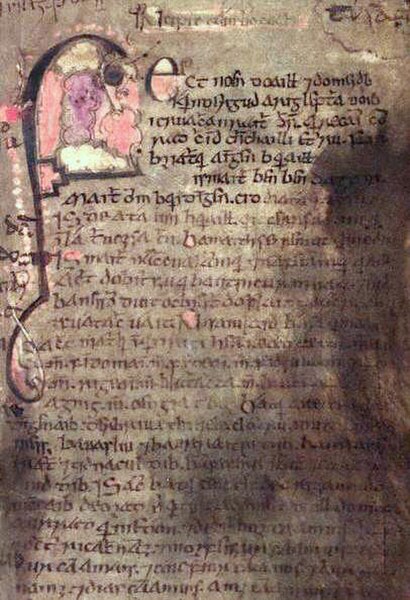In Gaelic myth, the Cailleach is a divine hag and ancestor, associated with the creation of the landscape and with the weather, especially storms and winter. The word literally means 'old woman, hag', and is found with this meaning in modern Irish and Scottish Gaelic, and has been applied to numerous mythological and folkloric figures in Ireland, Scotland, and the Isle of Man. In modern Irish folklore studies, she is sometimes known as The Hag of Beara, while in Scotland she is known as Beira, Queen of Winter.
Illustration by John Duncan in Wonder Tales from Scottish Myth and Legend (1917)
Ben Cruachan, highest point in Argyll and Bute, home of the Cailleach nan Cruachan
The Corryvreckan whirlpool (Scottish Gaelic: Coire Bhreacain - 'whirlpool/cauldron of the plaid') washtub of the Cailleach
The 'Wailing Woman' rock on Skellig Michael, County Kerry, is associated with The Hag of Beara
Irish mythology is the body of myths indigenous to the island of Ireland. It was originally passed down orally in the prehistoric era. In the early medieval era, some myths were transcribed by Christian monks, who heavily altered and Christianised the myths. Irish mythology is the best-preserved branch of Celtic mythology.
Riders of the Sidhe, a 1911 painting of the aos sí or Otherworldly people of the mounds, by the artist John Duncan
Cuchulain in Battle by Joseph Christian Leyendecker, 1911
The Fomorians, as depicted by John Duncan (1912)
Folio 53 of the Book of Leinster. Medieval manuscripts are the main source for Irish mythology and early literature.








